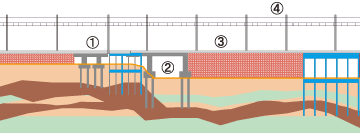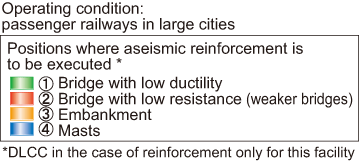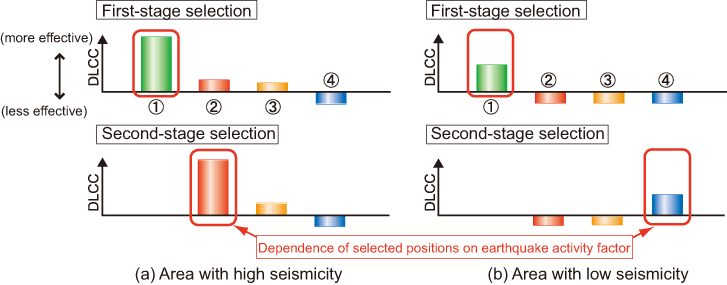8. Development of a technique to prioritise application of earthquake damage countermeasures to railway facilities
- The RTRI proposed a technique for prioritising earthquake countermeasures to be applied to railway facilities using difference in life cycle costs (DLCC) in pre- and post- application of these countermeasures.
In order to effectively carry out large-scale aseismic reinforcement of railways facilities with a limited budget, it is necessary to formulate rational strategies to set an order of priority for reinforcement and to select construction methods. Accordingly, RTRI defined the difference in life cycle costs before and after the implementation of earthquake countermeasures i.e. “DLCC”, and proposed a technique to prioritise such countermeasures in order to optimize this index. DLCC can be evaluated by predicting earthquake waveforms, taking their probability of occurrence into account then calculating the probability of damage before and after an earthquake using dynamic analysis, against the total distance covered by railway routes, and finally estimating the costs of repairs, operating losses and aseismic reinforcement based on the results.
The order of priority for earthquake countermeasures was determined using the proposed technique on a model line (Fig. 1) including bridges, embankments and masts (Fig. 2). In this example, first priority for reinforcement was given to bridges with low ductility, regardless of the seismicity. In the case of other facilities priority for reinforcement depended on the earthquake activity factor. Accordingly, bridges with lower resistance were selected in areas with high seismicity, whereas masts were selected in those with low seismicity. The proposed technique made it possible to rank in order of priority earthquake countermeasures according to the operating conditions of routes, the earthquake activity factor and the condition of structures, etc.
 Fig. 1 Model line used for assessment
Fig. 1 Model line used for assessment
 Fig. 2 Example of earthquake countermeasures priority ranking using the proposed technique
Fig. 2 Example of earthquake countermeasures priority ranking using the proposed technique